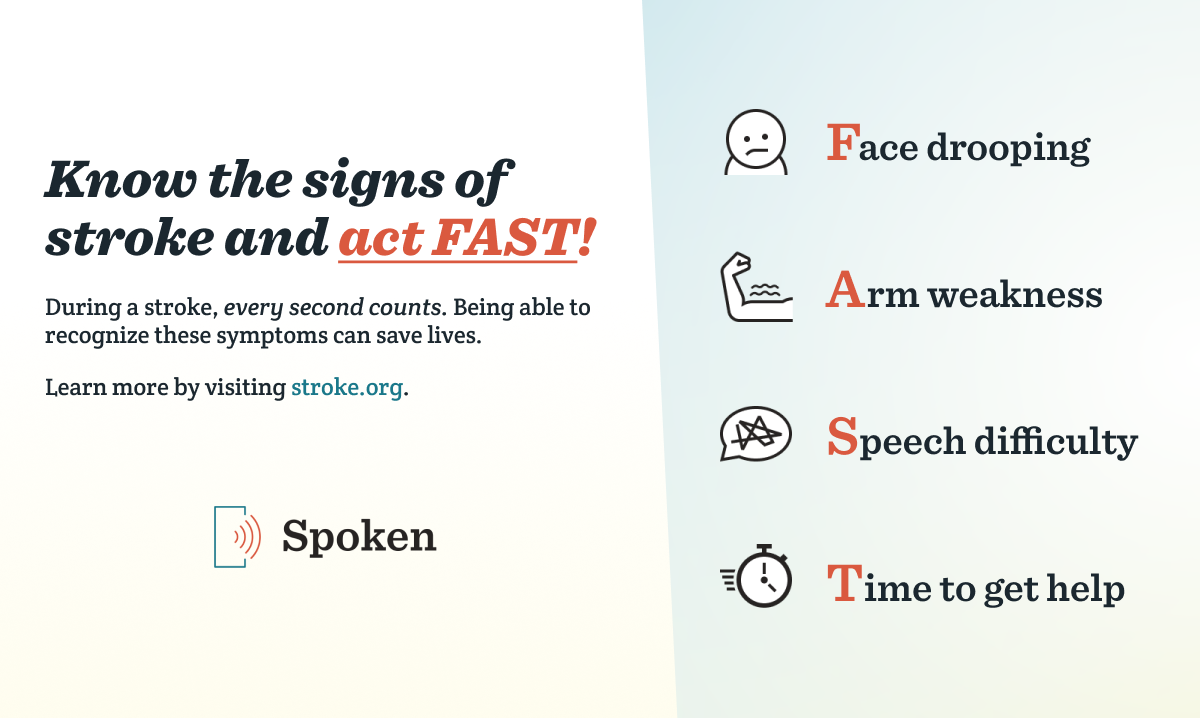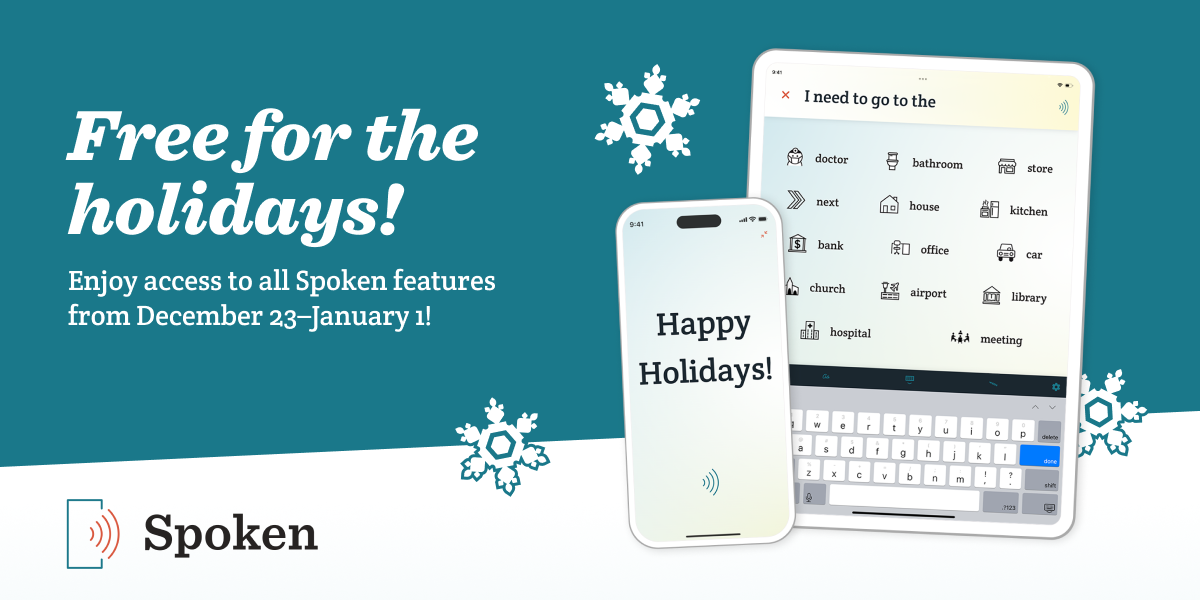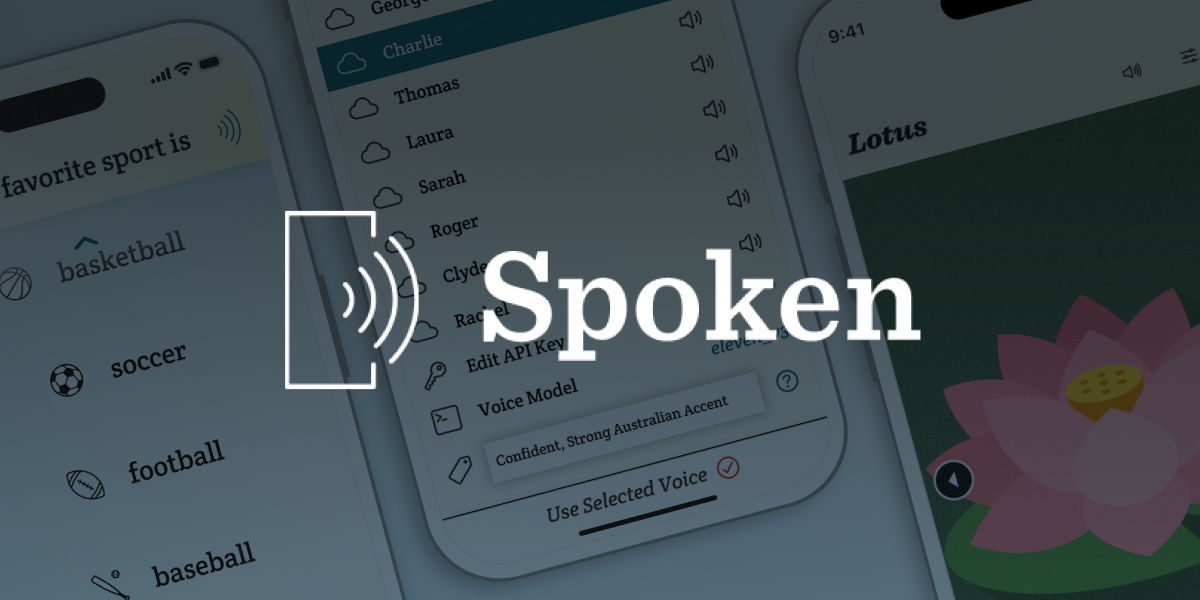New AAC Tool, World Stroke Day, and More (Spoken Roundup #17)

Welcome to Spoken’s roundup, where we highlight this month’s best stories related to augmentative and alternative communication (AAC), nonspeaking autism, aphasia, and other speech and language disorders. Read on if you’re an AAC user, speech therapist, or just interested in augmentative communication — there’s definitely something here for you!
Speech Spotlight
‘I Struggle To Speak but Dream of Being on Stage’
In a BBC feature, 15-year-old Scarlett shares her experience with selective mutism — an anxiety-related condition that restricts her ability to speak. Diagnosed at age eight, Scarlett has navigated a challenging path that conflicts with her passion for musical theater. She and Lucia, a fellow teen with selective mutism, speak out on the isolation they often feel due to the lack of awareness about the condition. The article does a great job shedding light on selective mutism’s impact, how the condition is often misunderstood, and the critical need for better support in schools and communities. Check it out to learn more!
Autism Advocacy
Evaluating Gaze Interactions within AR for Nonspeaking Autistic Users
A new study from the University of Calgary and the University of Virginia revealed promising findings on using gaze-based technology to support communication for nonspeaking autistic individuals through augmented reality (AR). The researchers developed “HoloGaze,” an AR system that lets users select virtual targets by either sustaining eye contact or using a “gaze + click” method, which combines eye tracking with a physical button. Most participants comfortably used the device and successfully completed eye calibration — a key step for autistic people with sensory sensitivities. The majority of participants preferred the gaze + click mode and were more successful in completing complex tasks like spelling on a virtual letterboard than those using gaze alone, suggesting this interaction style improves both accuracy and reduces fatigue. These promising results suggest gaze-based AR could work as an accessible, low-fatigue communication alternative. Make sure to read the study for the full details.
Autism Research — What’s New in October
This month, we’re sharing a roundup within our roundup. It’s roundup-ception! Ann Memmott, an autistic researcher, curates the latest research and studies impacting autistic lives. What makes Memmott’s roundup so valuable is that, as an autistic person herself, she brings a uniquely informed perspective, drawing on both lived experience and professional expertise to evaluate the research. Check out the research roundup at Neurodiverse Connection.
Aphasia Awareness
Spotting a Stroke F.A.S.T.
For World Stroke Day on October 29, the American Heart Association focused on the urgent importance of recognizing stroke symptoms and acting quickly. Stroke is not only one of the most common medical emergencies but also a leading cause of aphasia, making this day especially relevant to our readers. Through resources like the F.A.S.T. Experience, the AHA provides interactive tools to help the public recognize symptoms and understand stroke prevention. Be sure to check these resources out, because they might help you save a life someday.

Technology and Communication
First Responders Receive New Resource To Bridge Communication Barriers
A professor from the University of Iowa recently launched RescueVoice, a new AAC app designed for emergency responders who need to communicate with speech-impaired individuals. The app provides quick access to essential vocabulary and visuals — like pain indicators, allergies, and symptom descriptions — making it easy to communicate this vital information quickly, even under high-stress circumstances. You can learn all about RescueVoice’s creation here.
Thanks for reading! If you’re looking for even more stories, check out our previous roundup!
About Spoken
Spoken is an app that helps people with aphasia, nonverbal autism, and other speech and language disorders.


